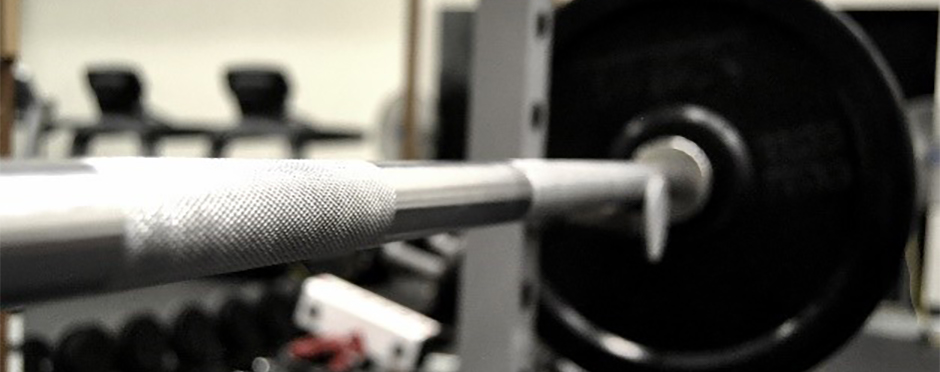
Stronger than Yesterday: Lifting and Learning
Leave a CommentThe definition of health is not one-dimensional. Health(y) is a state of complete well-being, not only the absence of disease or illness.1
Living a healthy lifestyle is a result of learning how to proportion aspects of health, such as physical fitness and psychological health. This balance can be disrupted when ideas of perfection get in the way. Maintaining a perspective that there is a “perfect” way to exercise or that exercise leads to a “perfect” body can be detrimental to any gym-goer. Striving for exercise perfection leaves more room for failure than success. This fear of failure is likely to impact success by reducing confidence and feelings of self-worth.2
Setting Healthy Goals
Health, and specifically fitness, is a process filled with goals, success and setbacks. Perfection is a lofty goal rooted in competition while self-improvement is a goal established in learning. When exercise is undertaken with the goal of learning how to become better, we develop a greater sense of ownership and confidence in our work.3 Creators of self-improvement goals understand that their abilities to run, deadlift or even throw are not fixed skills. Instead, these are skills that can be improved upon.
Setting the goal of becoming strong inherently challenges us, the goal setters, to learn how to become better than we were the workout prior. Poor form and a negative attitude will take a toll on our goals, where understanding how to move properly and learning how to embrace occasional defeat will bring goals to life.
Below are a few tips to consider when creating your workouts. These tips, and previous posts in the Stronger than Yesterday series, are a resource to encourage strength and fitness motivation.
- Start Young. Learning about exercise starts as early as the playground. Active kids are more likely to stay active as they grow into adulthood – especially if they love what they do.5
- Write It Out. Decide upon a specific goal or goals. Setting goals allows you to create further direction with your workout program. Whether it is squats or pushups, setting a goal gives you a direction to work toward.
- Plan It. After setting a goal, ask yourself “how will I get there?” The act of planning reinforces your desired goal. Consider using a journal or notebook to write down your workouts each week! In this journal, you can write out exercises, sets, reps, times and any other training variable you may use.
- Stay Consistent. Keep a log of the things that you have accomplished. This will serve as a dual-purpose reminder of your goals and progress made. Measuring progress is as simple as logging running miles or weights lifted in the gym. Emotional well-being can fluctuate day-to-day and this is important to keep track of in relation to exercise goals. For example, you may have only gotten five hours of sleep before one workout and lacked the energy to work as hard as a previous exercise session.
- Do what you love. Novice and experienced exercisers alike will benefit from this little piece of advice: choose exercises that you enjoy. When people participate in activities they truly like they will be able to develop greater ownership over their behavior, a quality that is immensely important in the developmental process. In contrast, doing activities that are not perceived as enjoyable can diminish exercise motivation and may force you to seek external motivators to stay accountable.
Becoming Stronger than Yesterday
An exercise routine is as unique as the person who created it. A key to any great program is enjoyment and viewing fitness goals as little pieces to a bigger puzzle. With safety, always in mind, try different movement patterns (a squat, deadlift, pull-up, or push-up) and experience exercise as a chance to learn about your abilities. You may be surprised as to what you will find!
If soreness from your exercise routine occurs and lasts more than one week, schedule a free assessment at your nearest Athletico location so our physical therapists can help your injury heal properly.
The Athletico blog is an educational resource written by Athletico employees. Athletico bloggers are licensed professionals who abide by the code of ethics outlined by their respective professional associations. The content published in blog posts represents the opinion of the individual author based on their expertise and experience. The content provided in this blog is for informational purposes only, does not constitute medical advice and should not be relied on for making personal health decisions.
Resources:
1. Christopher Spray, John Wang, Stuart Biddle, & Nikos Chatzisarantis. “Understanding motivation in sport: an experimental test of achievement goal and self determination theories.” European Journal of Sport Science (2006): 43-51.
2. Daniel Weigand, Sam Carr, Caroline Petherick, & Adrian Taylor. “Motivational climate in sport and physical education: the role of significant other.” European Journal of Sport Science (201): 1-13.
3. Harnish, Amelia. “Why Perfectionism could be Killing you.” 3 October 2014. Health. 11 February 2017. <http://www.health.com/depression/why-perfectionism-could-be-killing-you>.
4. Jan Seghers, Nathalie Vissers, Cindy Rutten, Steven Decroos, Filip Boen. “Intrinsic goals for leisure- time physical activity predict children’s daily step count through autonomous motivation.” Psychology of Sport and Exercise (2014): 247-254.
5. “World Health Organization.” Constitution of the World Health Organization. New York, 19-22 June 1946.
